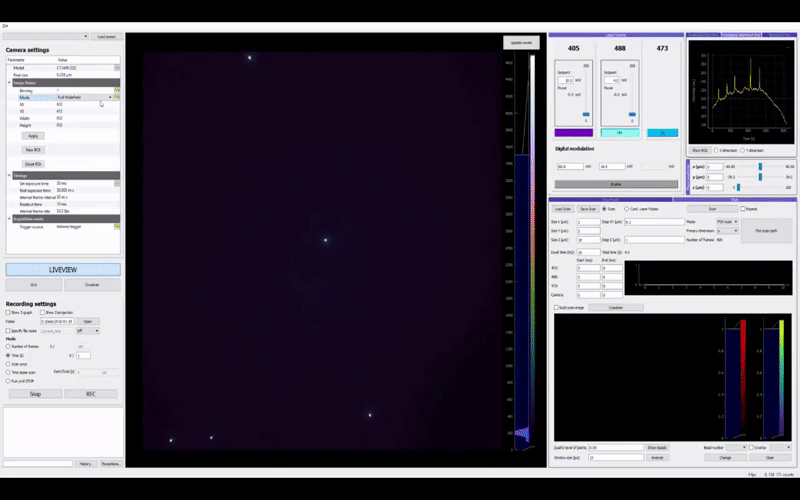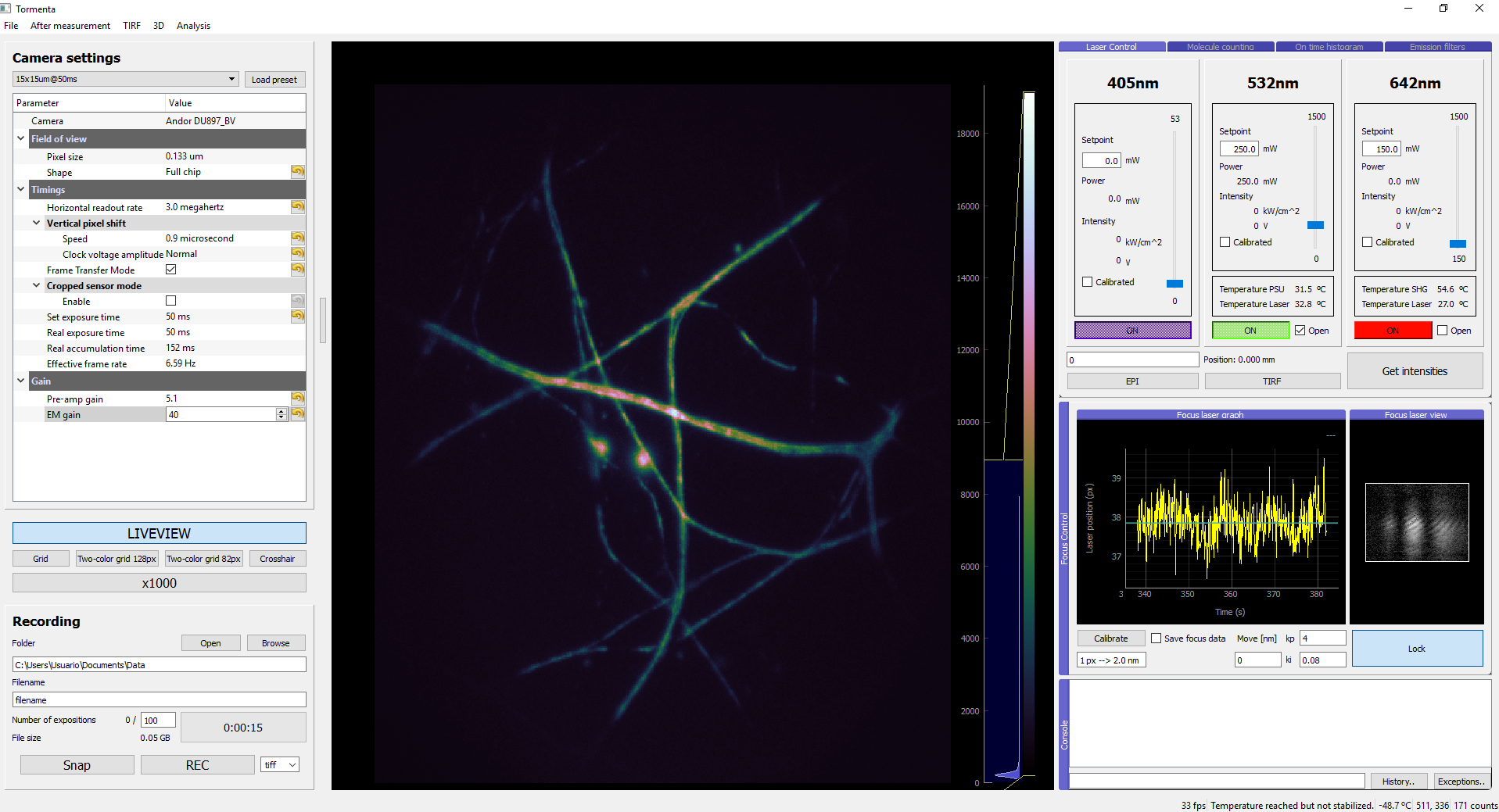Instrument integration Python software for microscopy.
Motivation
State-of-the-art optical microscopy requires coordinated control of several instruments: cameras, photodetectors, lasers, shutters, etc., which is typically achieved via custom routines running on a PC and AD/DA converters. Currently, the most popular environment for instrument control has proprietary and closed software. However, in the last years, there has been a growing interest in Python. Instrumentation could benefit from the language because it is cross-platform, free, open-source and also because there is a massive set of ready-to-use high-level libraries, including key libraries for machine learning and deep learning methods.
Tormenta
Within this context we developed Tormenta, an open-source modular, flexible Python software for the control of optical microscopes and adaptable to any kind of imaging experiment. It consists of a graphical user interface along with several modules to control common microscopy hardware such as lasers, cameras, photon detectors and cameras. It also includes features such as large data set handling, a focus stabilization module, and routines for background subtraction, among others.

Resources
The version specifically dedicated to widefield microscopes was presented in the paper Barabas, Masullo, Stefani, Note: Tormenta: An open source Python-powered control software for camera based optical microscopy, Review of Scientific Instruments, 2016 (Link). The code is hosted at this GitHub repository.
Lately, we adapted the software to scanning microscopes and included new functionalities. This version is hosted at this GitHub repository.
